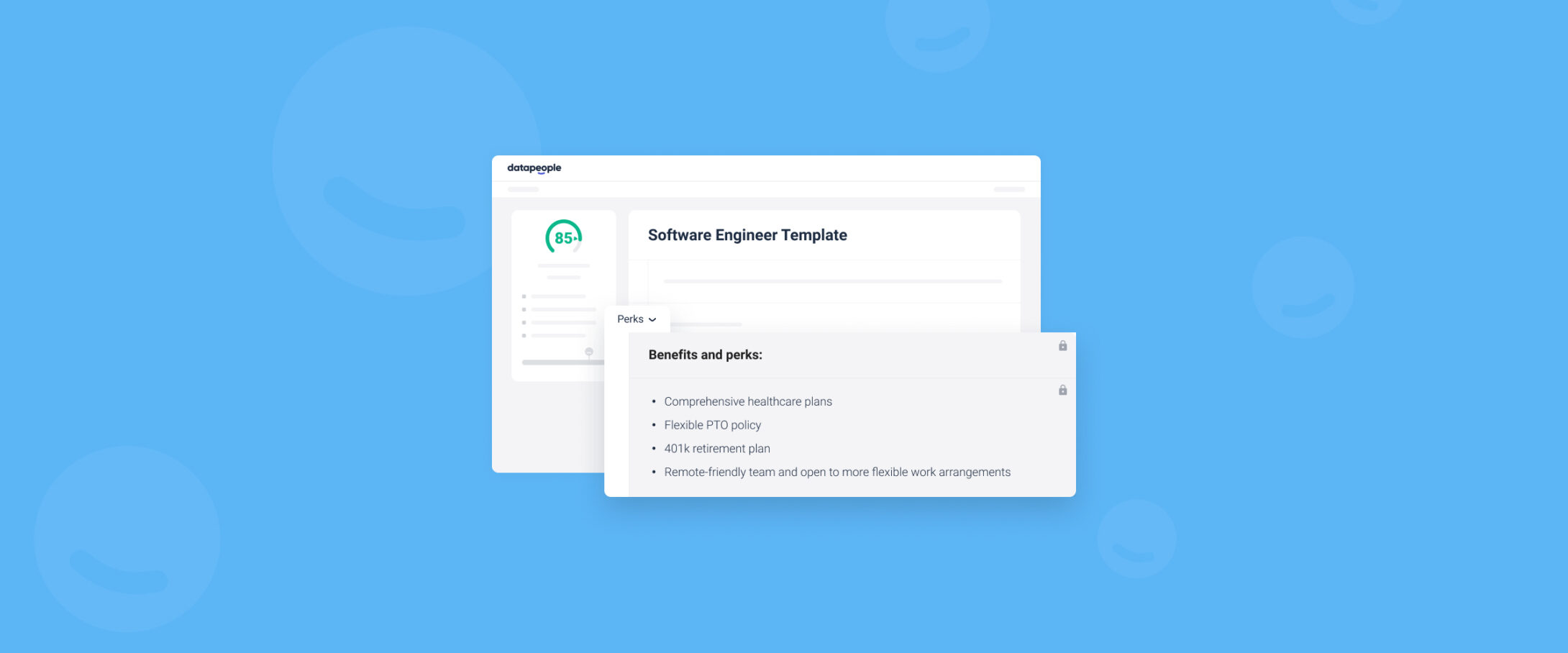Although considered a standard component of many jobs, benefits are not always made explicit during a job search. Yet as the Great Reshuffle showed, job seekers are paying attention to what employers are (or perhaps more importantly, aren’t) offering. In short, they want to see benefits in job posts – right at the start of the recruiting process.
Including benefits in job posts helps job seekers
The pandemic inspired countless workers to reflect on what they really want and need out of a job, and many have reevaluated their priorities. Candidates are looking to be more fairly compensated, and that includes benefits. Similar to salary and job location (in an increasingly hybrid world), job seekers don’t want to invest a lot of time in an interview process only to find out the benefits of the role don’t meet their expectations.
The data supports this. LinkedIn ran an experiment asking job seekers to highlight the core sections of a job post that would make them more likely to apply. In this experiment, the benefits section was ranked the top section (along with salary).
We’re also seeing this show up in job search engines like LinkedIn, Glassdoor, and Google where perks and benefits are being extracted from job posts and added to search results.
Including benefits in job posts helps companies
Benefits clearly communicate a company’s values to job seekers and offer a window into the company culture. As the age-old saying goes: “actions speak louder than words.”
Does your job post just say you welcome women to apply or does it also list benefits to back that up? (Like paid parental leave, flexible/hybrid/remote work, and family planning care.) And does your job post just offer a subscription to a meditation app or does it offer mental health care including therapist visits?
Aside from attracting a diverse, qualified candidate pool, investing in the health and overall well-being of your employees helps retention and reduces burnout, which leads to improved business performance. Showcasing your specific benefits lets you directly tell candidates about your company values.
Different benefits = different impacts
Not all benefits are created equal, though. Benefits that have a substantial impact on someone’s well-being (health care, paid leave, retirement plans) are more important than perks, which, while nice, do not significantly affect someone’s quality of life (offsite retreats, fancy new office space, ping pong tables, free happy hours).
Washington State’s laws regarding salary disclosure have made this distinction quite clear. They require companies to describe the benefits that have significant financial outcomes in detail, including health care, retirement, and paid time off/leave.
However, the importance of benefit type does vary by location. The universal benefits a country’s government provides affect which benefits an employer might offer in that country. They also impact which types of benefits job seekers are looking for from an employer.
For example, the United States government does not provide universal health care or paid parental leave, so those benefits are crucial for job seekers in the U.S. In other countries where health care is provided by the government, additional “top up” or supplemental private health insurance is often offered.
The takeaway
Things have changed since the pandemic, and job seekers want more transparency from employers during the recruiting process. Particularly about the parts of the job that are most important to them: pay and benefits.
Benefits in job posts are a window into the job and your company. By clearly describing your benefits, you help job seekers better gauge whether they should apply. (Which saves everyone time in the long run.) You also convey your company culture. But you do it in a much more concrete way than a passing mention or a link to your careers page will ever do.
